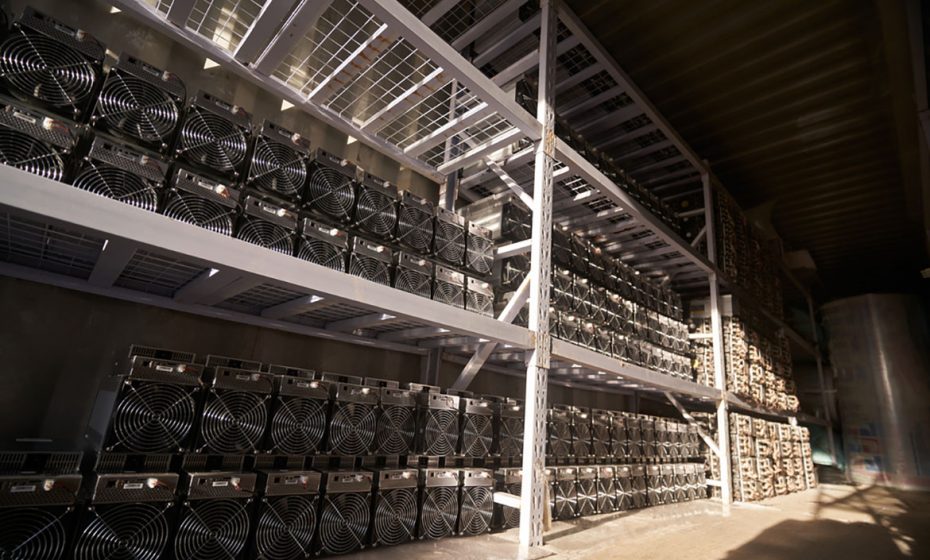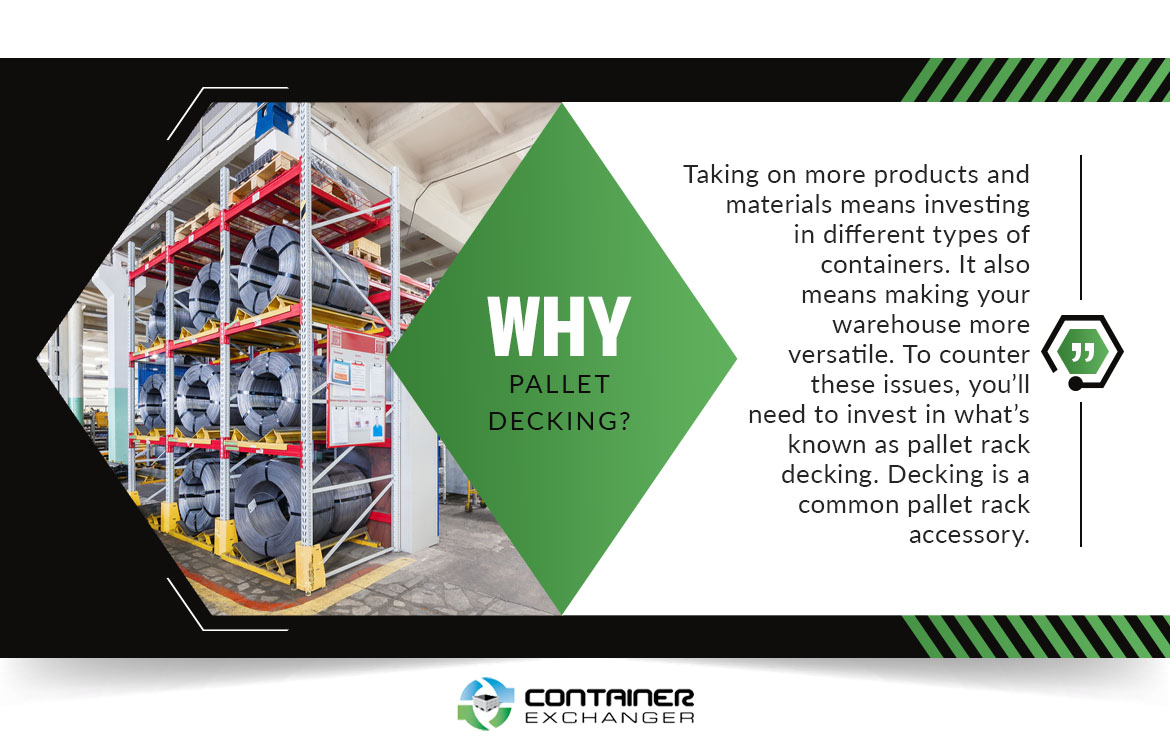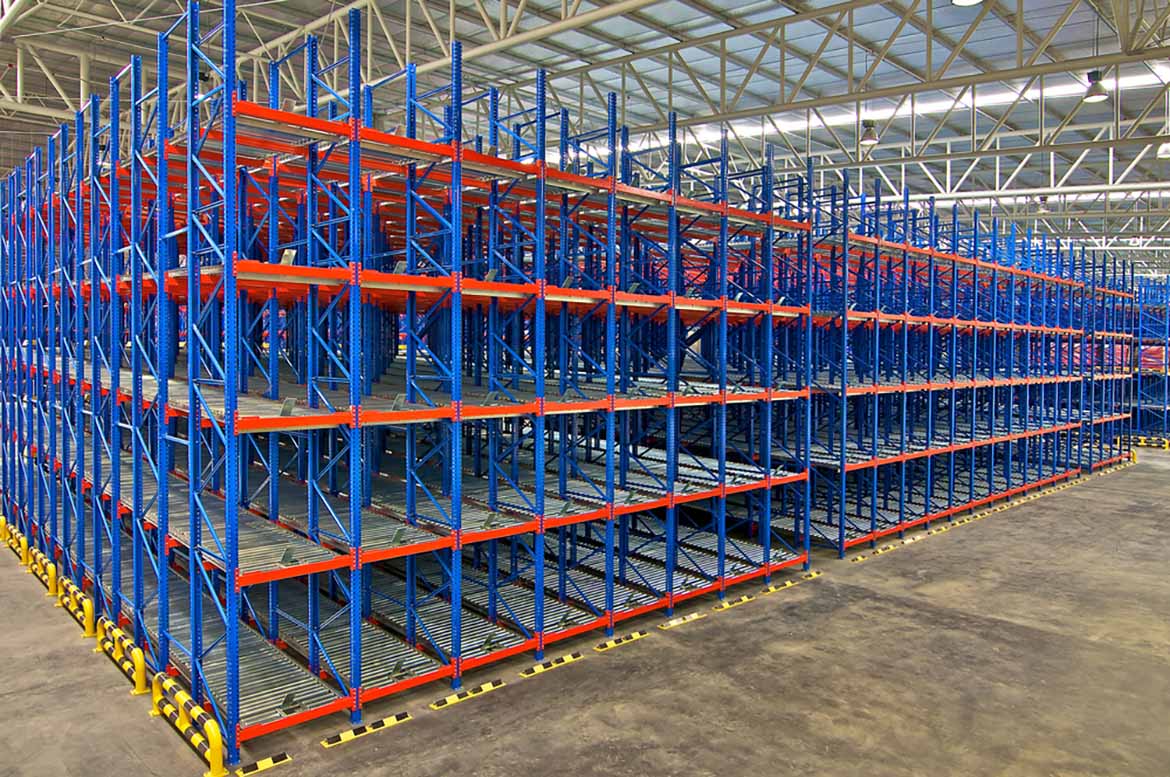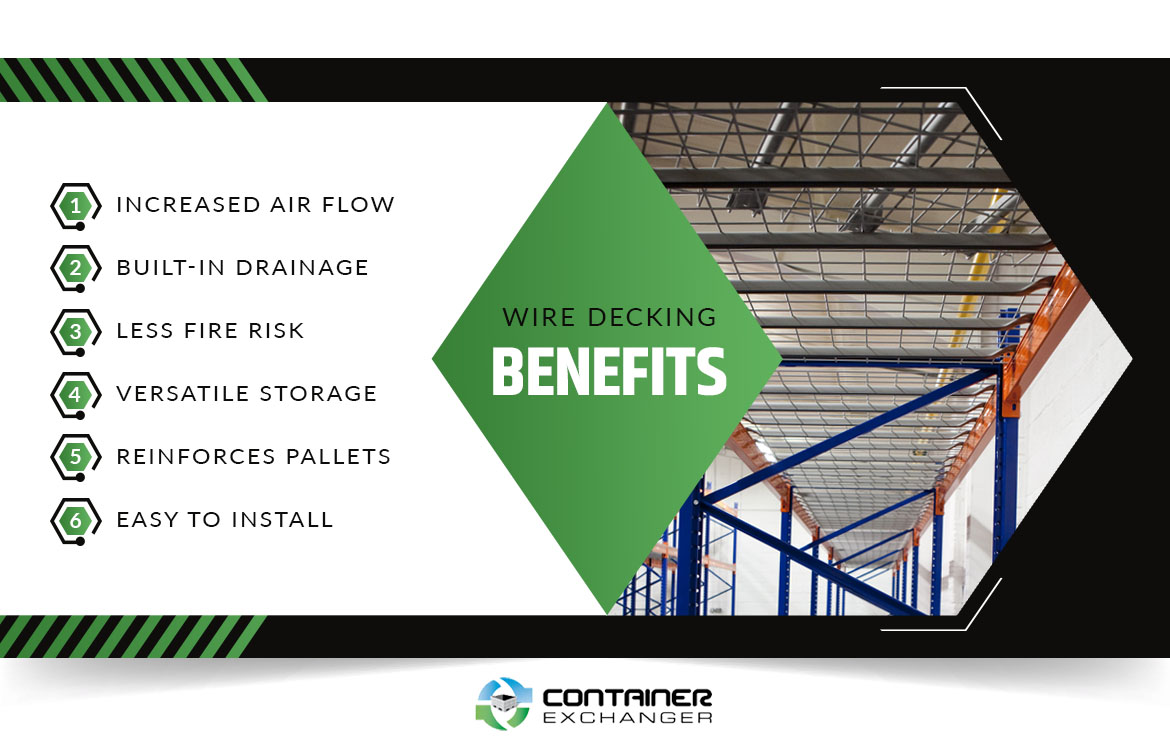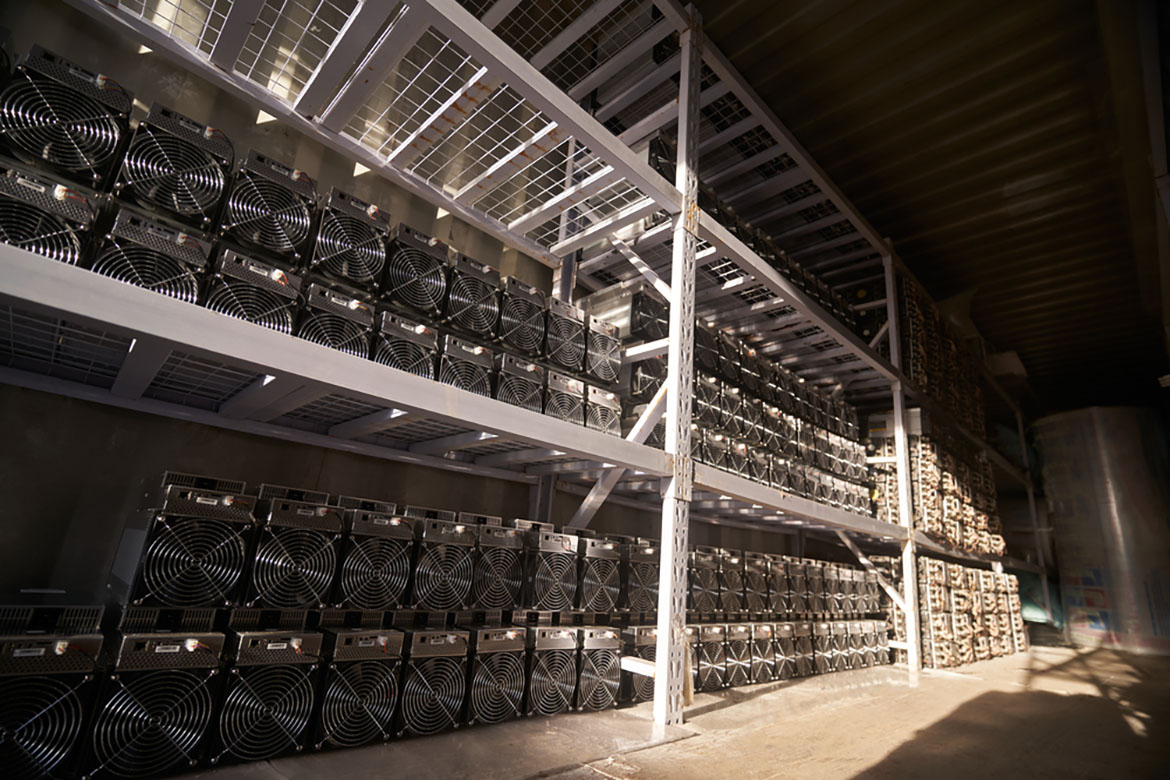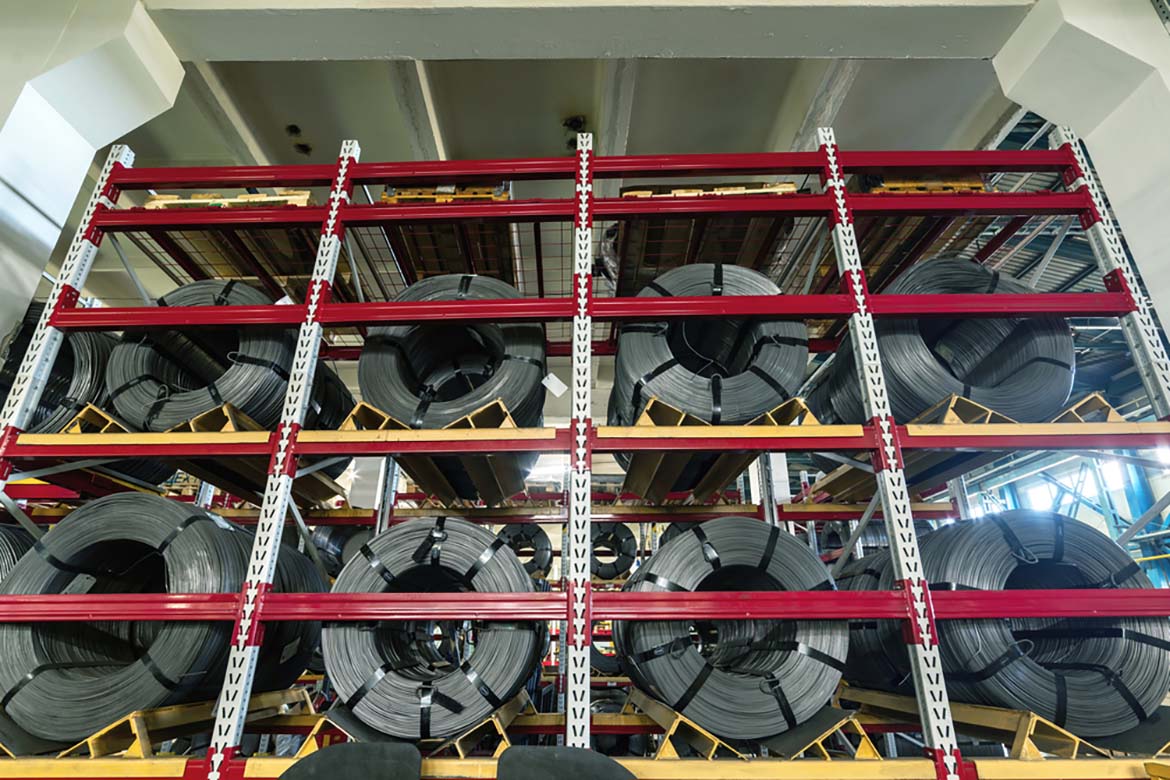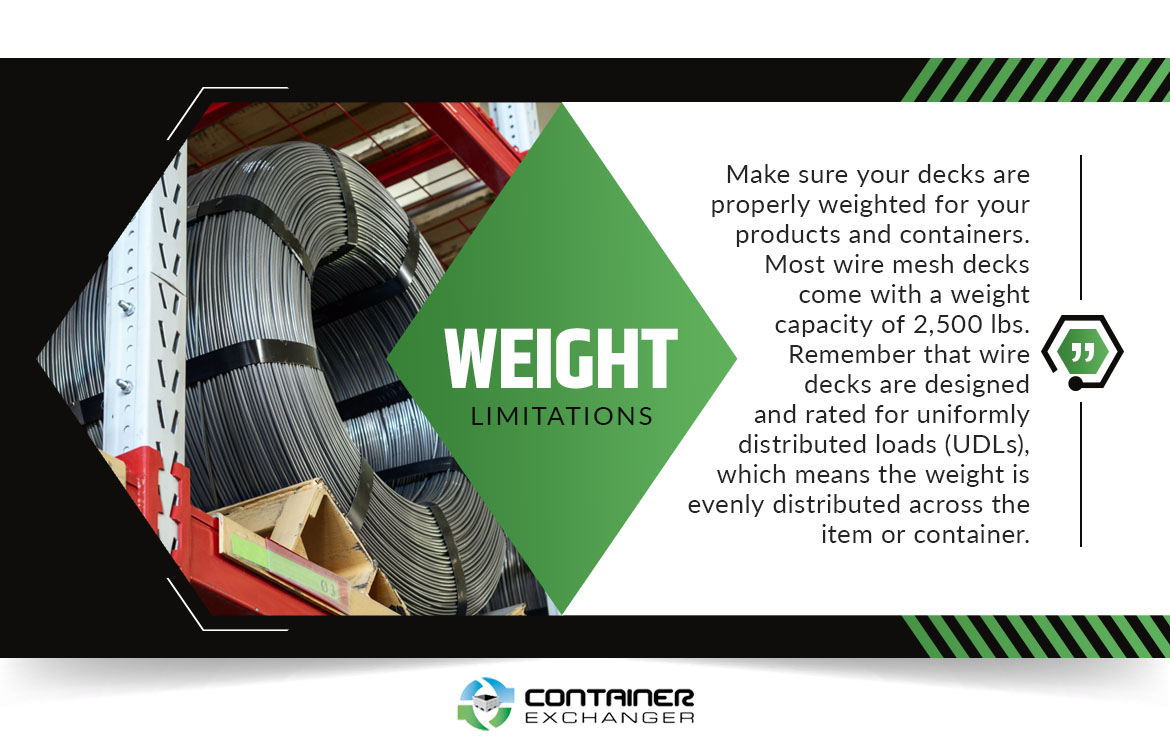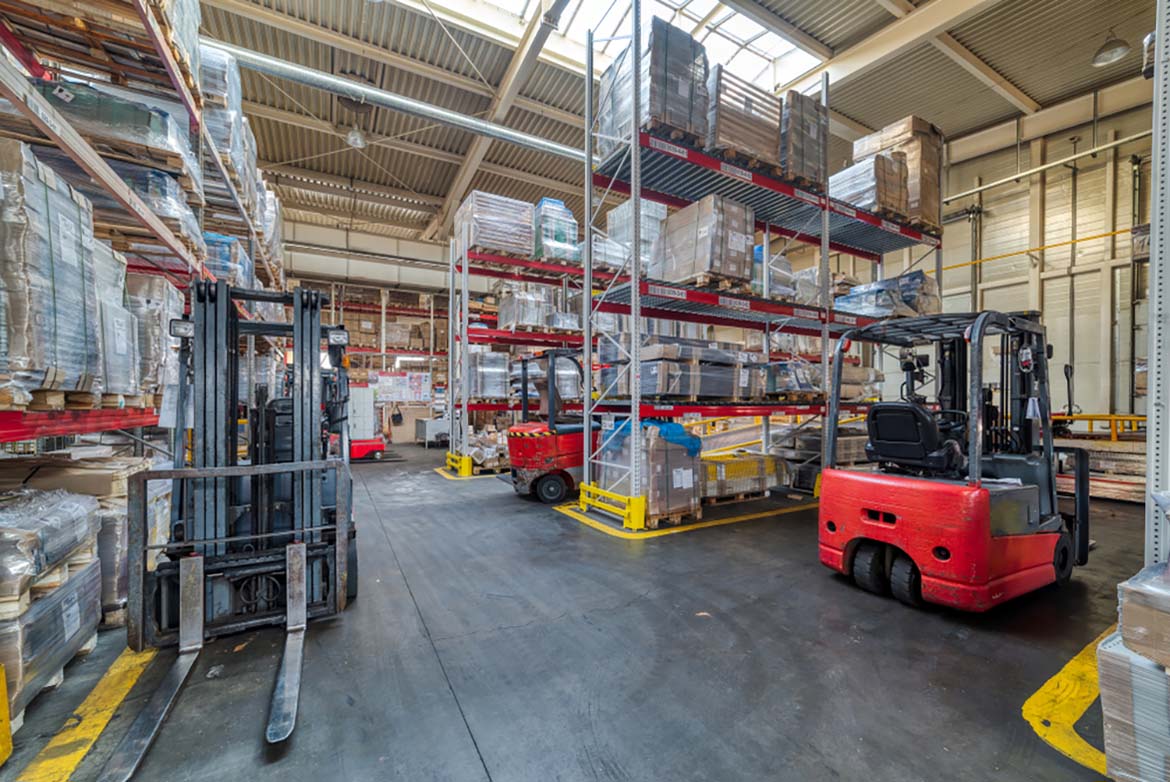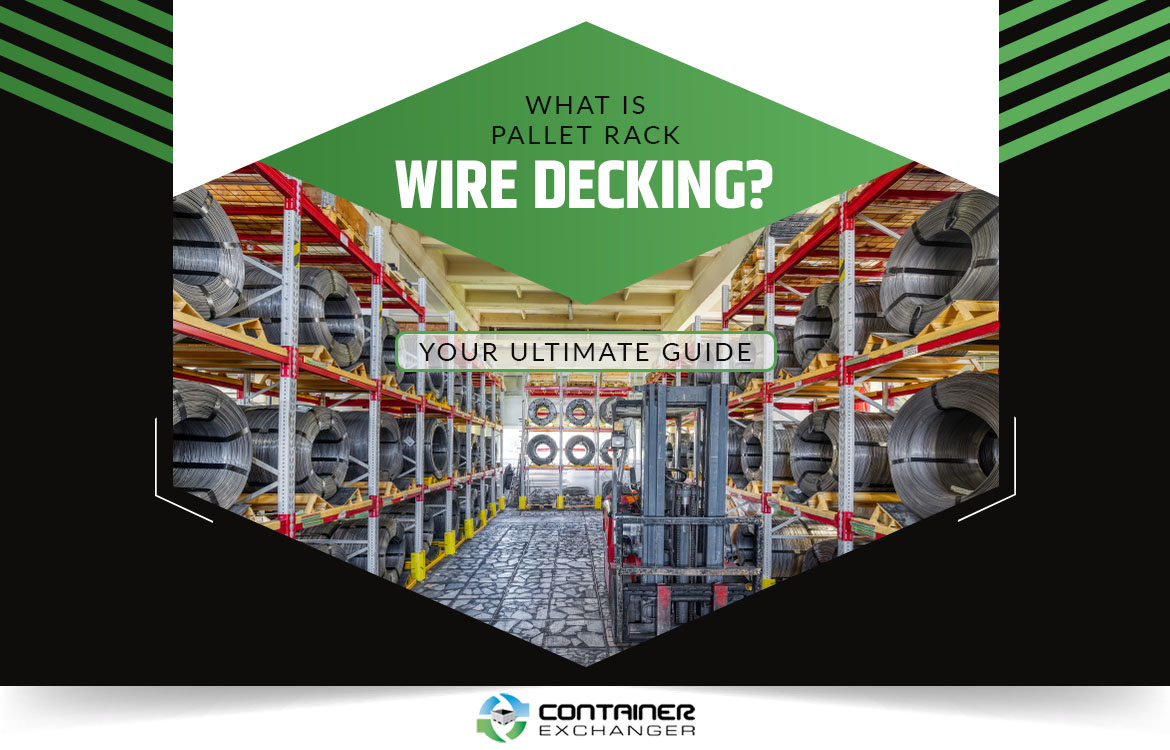
If your warehouse is made up of hundreds of different products, you need to use pallet rack decking to keep your goods secure on the shelf. This adds another layer of protection to your stack racks, so you can store all kinds of containers, not just those that fit on a pallet.
You can use wood, grates and corrugated liners to beef up your racks, but wire mesh tends to be the best option. This material is strong, lightweight and resistant to fire. Lining your pallet racks with wire mesh can be an involved process. Learn everything you need to know about wire decking, so you can protect your products from harm.
Why Every Warehouse Needs Pallet Decking
A simple stack rack may not be enough when it comes to storing your inventory. These systems usually consist of a rear and front beam, but placing the pallet directly onto the beams can be a safety hazard. The pallet could fall between the beams if the weight isn’t evenly distributed between both beams.
If you are using wooden pallets, there’s also a chance the wood could snap when there’s nothing underneath the pallet to support it. This increases the risk of workplace accidents and inventory damage. Items could fall or tumble down from the shelf, possibly injuring workers.
If your facility is like most warehouses, you’ve probably taken on more inventory over the last few years. The average number of SKUs in a warehouse was 13,985 in 2018, up from 13,130 the previous year. The trend will likely continue as warehouses and retailers try to diversify their inventories in the face of uncertainty.
As you continue expanding, you will likely find that some items and containers don’t fit onto a pallet. Smaller items and containers can also slip through the cracks. If you manufacture goods on site, you will also need to organize your supplies and materials into parts bins and tote containers, ideally on a stack rack, so your workers can quickly access the items they need. Taking on more products and materials means investing in different types of containers. It also means making your warehouse more versatile.
To counter these issues, you’ll need to invest in what’s known as pallet rack decking. Decking is a common pallet rack accessory. Essentially, the material covers the gap in between the front and rear beams, creating a flat, even space for you to store additional productions and containers. Decking transforms your stack rack into a reliable shelving unit, so you can store just about every type of container and item on the market today.
Choosing a Pallet Rack Decking System
There are lots of different types of decking materials to choose from, and some work better than others. Choosing the right material all depends on how you’re using your stack racks and how much you’re willing to spend on new supplies and materials.
Simple plywood 2 x 4s tend to be the least expensive option. You can lay them out in a row over the beams to create an even shelf space. However, the problem with plywood is that it’s not very durable. The wood can only hold so much weight. This may work if you only need to store lightweight items and materials like fabric or plastic. Wood is also extremely flammable. Consider choosing more durable materials to protect your inventory in an emergency.
You can also use metal pallet supports, or crossbars, which look like wood 2 x 4s, to create more shelf space. They extend across the beams just like plywood but without the added fire hazard. Pallet supports also have better weight capacity, but they are much more expensive.
Both options leave cracks in between, which can still put products at risk, especially if you store small, valuable items or supplies that can easily get lost.
Find Used Commercial Racking Systems Online to Save Even More
Metal grates also tend to be popular in some industries. The grates slide onto the stack rack for a secure fit. This approach offers the most weight capacity, but it also tends to be the most expensive.
If you’re looking for a decking material with excellent weight capacity but without the exorbitant cost, we recommend using wire decking for pallet racks instead. The mesh reduces the amount of empty space between the beams, so there’s less of a chance your products fall through the cracks. The metal also wraps around the beam in most cases for a more secure fit.
The Benefits of Pallet Rack Wire Decking
In addition to its strong weight capacity and affordable price, there are so many reasons to use wire mesh decking over other types of materials, including:
Increased air flow: Wire mesh helps your warehouse breathe. Air can pass through the small holes in the mesh, which will help you keep the interior the right temperature. Heat tends to build up inside storage facilities in the summer. Your ventilation system will need to replace the air inside your warehouse one to three times per hour by replacing the hot air with fresh air from the outdoors. Thick pieces of wood and metal will absorb the added heat while blocking the air, which makes it harder to cool your warehouse.
Less fire risk: The metal wires are also resistant to fire, so you don’t have to worry as much about your entire inventory going up in flames in an emergency.
Built-in drainage: The mesh is also porous. It lets water and other fluids quickly drain to the floor, so it doesn’t build up inside your containers or make a mess on the shelf. This is particularly important if your facility processes or handles hazardous chemicals and fluids, such as solvents, cleaners and gels.
Versatile storage: You can use wire decking to store a wide range of items and containers. This also gives the option to store items directly on the shelf. You can also take on new items and clients in the future without worrying about whether their products will fit on the rack.
Improved safety: Mesh covers the entire space between the beams, so you can set your containers on the shelf with more peace of mind. Your team doesn’t have to worry about positioning the container so that it is touching as many 2 x 4s or pallet supports as possible. They can place it anywhere on the mesh and be on their way. This also limits the risk of packages and containers falling on top of workers.
Support damaged pallets: The mesh will also help reinforce your wooden or plastic pallets. The weight of the pallet will be evenly distributed across the mesh for more stability throughout your facility.
Easy to install: You don’t need a lot of training to install a wire mesh decking system. The support bars are usually attached to the beams using tek screws. Just drop them in and secure them with a screwdriver, and you will be good to go.
Different Types of Pallet Rack Wire Decking
You can choose from a range of different mesh types and styles depending on your storage needs. These include:
Flared channel deck: This is when the mesh wires wrap around the edge of the beam while the underneath support bar is flared out and rests on the top of the beam.
Outside waterfall deck: Like the flared channel expect that the underneath support bar rests on the inside of the beam. The mesh wires still wrap around the outer edges.
Inside waterfall deck: This is when both the wire mesh and underneath support bar rest on the step of the beam.
Inverted channel deck: The mesh still wraps around the outer edges of the beam, but the underneath support beam is flipped over and not accessible from the top. This tends to be the most common choice in the food and beverage industry.
Flush deck: This is like the inside waterfall deck, only the wire mesh is flush with the edge of the support beam for an even surface. Both the wire mesh and support bar rest on the step of the beam.
Upturned deck: The wire mesh extends to the edge of the beam before turning upward. This creates a backstop for products and containers that might slide to one side. You can also use this style like you would a wire basket by storing large items directly on the shelf.
Shop for Stack Racks Online to Make the Most of Your Space
How to Choose Pallet Rack Wire Decking
Now that you understand how these systems work, it’s time to choose a wire deck for your products. Use this guide to find the right style for your facility:
Size
If you already own stack racks or plan to buy some, you need to make sure the wire mesh fits with your chosen rack system. First, you need to measure the length of the pallet rack beam. Then, measure from the outside of one end of the rack to the outside of the other end of the rack at the same height. Now measure the width of the top of your beam. Measure the width of your beam step if you have one. Box and structural beams usually don’t have steps. You may need to install more than one wire deck per shelf depending on the length of your beams.
Overall, the depth of the wire decking must match the depth of the pallet rack frames. Common depths include: 36″, 42″, 44″ and 48″.
Common widths for wire decking include:
- 46″ – Used with 4-ft, 8-ft and 12-ft beams
- 52″ – Used with 9-ft beams
- 58″ – Used with 10-ft beams
Weight limitations
You also need to make sure your decks are properly weighted for your products and containers. Most wire mesh decks come with a weight capacity of 2,500 lbs.
Remember that wire decks are designed and rated for uniformly distributed loads (UDLs), which means the weight is evenly distributed across the item or container. The UDL is established when the load is set over most of the deck surface and comes within 2″ of the front and rear load beams.
You will need to use a customized wire deck if any of your products or containers don’t fall under the category of UDL. This is when the weight is concentrated at one point or points, rather than evenly distributed across the rack.
Condition
If you are purchasing used decking materials, make sure you find a reputable seller with a long history in the supply chain or storage industry. Spend some time cleaning and inspecting the wire mesh to make sure it is up to industry standards.
Flue guards
You may need additional accessories when using a mesh wire deck. Many facilities will place flue guards in between the shelves or back-to-back racking systems to increase airflow and prevent items from falling through the cracks. You can also use hanging or freestanding dividers to divvy up the space on the rack. This makes it easy to slide plastic totes onto the shelf.
Once you get your decking system off the ground, use an automated warehouse system to keep track of any changes in your warehouse. You can use the software to instantly track the location of certain items as they move through the supply chain. Report any changes in worker productivity or transit times to keep your warehouse on the right track.
Image Credits
Nordroden/Shutterstock.com
Artie Medvedev/Shutterstock.com
urbanbuzz/Shutterstock.com
NeelRong/Shutterstock.com
Praethip Docekalova/Shutterstock.com
